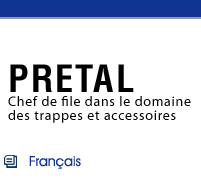Information
- A reference guide easy to use
- Net unobstructed opening
- Specification guidelines for engineering designs
- Maintenance
- Corrosion
CORROSION
Corrosion is the disintegration of metal through an unintentional
chemical or electrochemical action starting at its surface by
the ambient conditions.
Chemical corrosion is the result of a reaction between the
external medium and the metal. All metals exhibit a tendency
to be oxidized. According to its mechanical properties,
this film can:
- Either protect the base metal from later corrosion by
preventing any contact with an external corrosive condition;
it is the case
of aluminum for example.
- Either disintegrates in the ambient conditions to allow
corrosion to continue its attack up to a complete destruction
of metal;
it is the case, for example, of most structural steels.
The intensity of chemical corrosion depends on the environment
chemical composition and temperature as well as the chemical
and crystalline compositions of metal or alloys. The speed of
corrosion
is measured in microns/year (10-6 meters/year.)
Electrochemical corrosion is a process in an electrolyte (solution
which lets pass the electrical current) when 2 dissimilar metals
are brought into electrical contact. Because of their potential
electrochemical difference, a galvanic cell is formed and the metal
with the most "negative" electrochemical potential corrodes
gradually while the second will remains intact.
The used of metals and chemically stable alloys such as stainless
steel or aluminum, and the elimination of the direct external
aggressive contact by using metal coverings (galvanization *),
non steel coverings (paintings, bituminous, special varnish, plastic
etc.) or by accelerated oxidation (anodization **) are enough
to eliminate chemical corrosion.
The elimination of the galvanic cells by electrical interposition
of an insulator between 2 metals is enough to push back
electrochemical corrosion.
* Hot galvanization consists of a covering by immersion in
a bath,
at ±450°c, of liquid zinc. Thickness of the layer reached
120 to 200 microns and even sometimes more. This coating
(coated with zinc)
is sufficiently stable in a solution where pH
varies between 5 and 12.5.
** Anodization is an electrochemical process that artificially
increases the natural and transparent layer of aluminum oxide.
The oxide coating has a thickness ranging between 5 and 25
microns.
And resists all the solutions where pH varies between
4 and 10.
POLICY FOR PRETAL PRODUCTS:
More than 75% of PRETAL products are fabricated with aluminum
component. Not only this metal is available to profusion in the
province of Quebec and in Canada but it is also the most
"ecological" metal. Indeed, contrary to steel, aluminum naturally
resists to air and water corrosion, also his chemical inertia
and his natural properties confirm that aluminum is adapted
for the protection and the conservation of the environment.
It is not poison, non combustible and recyclable at 100% by
keeping its original properties. Aluminum is 3 times lighter than
steel, whereas its mechanical performances are comparable.
Aluminum has one incomparable lifespan.
PRETAL products are also manufactured out of a choice of
materials resistant to corrosion such as the stainless steels 304
and 316, hot galvanized steel, anodized aluminum, used of
electric paintings and bituminous coating and isolator such as
Neoprene as often as necessary.
Next
(charts for the behavior of certain materials) ...
|












